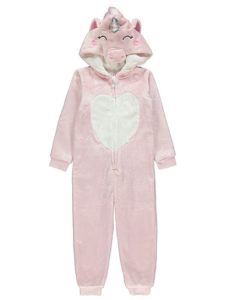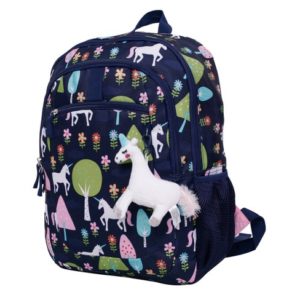The Unicorn is a much-beloved subject and star of many an ancient fable and modern fairy tale. It is a mythical beast that has accompanied many children (and adults) on an exploration of the fairytale world of the imagination. The mythical unicorn has a varied reputation. A fierce beast defending honor – or a gentle companion and representative of purity and grace. Today, the unicorn has been transformed into something a little different. It is now part of modern mythology and consumer buying trends. Images of unicorns dominate Instagram (at last count there were over 7.5 million of the social media site – more than mermaids). However, unicorns have appeared on coats of arms ever since around the 16th century. They were regarded as beasts that would only bow to men of virtue.
However, the popularity of the unicorn motif is no more widely apparent than in the incredible diversity of unicorn merchandise that is today available. Unicorns appear on a huge variety of goods. They appear on plush toys and backpacks, school supplies, clothing, inflatable pool toys, and coffee mugs. There is not a single type of modern merchandise that has not had a manufacturer apply a unicorn theme to it. Even the global coffee giant Starbucks brought out the Unicorn Frappuccino in April 20187. The limited-edition beverage became one of the most successful products in the history of the chain.

The stern visage and appearance of the unicorn’s that appeared in the 16th century on coats of arms (and earlier in illuminated manuscripts) has largely been replaced by a more approachable, softer and more glitter-adorned version. this has undoubtedly contributed to the increased popularity of merchandise with Millenials and the younger generation.
But it is not only the popularity of the unicorn motif that is fueling its rise as a merchandising phenomenon. Most characters that are popular with children require the payment of vast licensing fees in order to merchandisers to take advantage of their popularity and high profile. think Dora the Explorer, and any of the Disney or Marvel characters. Those licensing fees can simply be beyond the reach of small and medium-sized marketing and merchandising concerns. Not so the unicorn. Aside from properties owned by large studios, the generic unicorn attracts no fees – it is not protected by intellectual property rights. It is simply too attractive a motif to be ignored by merchandisers.
Although the greatest consumers of unicorn themed merchandise are with doubt the female aged under 18 demographic the appeal does reach further than that. There are many consumers in the 20+ demographic who are avid consumers of this sort of merchandise. The unicorn has also found a niche as an emblem of the LGBT movement (they seem to be associated with the well-known rainbow emblem of the movement).

The popularity of unicorns on merchandise of many different types does not seem to be a flash in the pan. the icon has become entrenched in modern-day mythos and consumer imagination – it is going to be around for many years.

 there’s nothing wrong with buying items that are a little bit unconventional. Try to buy products that capture the spirit of the unique and unconventional unicorn.
there’s nothing wrong with buying items that are a little bit unconventional. Try to buy products that capture the spirit of the unique and unconventional unicorn. cold environment. Warm and fuzzy unicorn socks tend to have a more feminine, less bright quality for those who are worried their wardrobe might get a little tacky.
cold environment. Warm and fuzzy unicorn socks tend to have a more feminine, less bright quality for those who are worried their wardrobe might get a little tacky. in their favorite, quirky style?
in their favorite, quirky style? for adults who may need more than one function.
for adults who may need more than one function. immense amount of love from kids from different corners of the world. Not just kids, but adults are also included in the list of those who love unicorns. This article will take its step into the magical world of
immense amount of love from kids from different corners of the world. Not just kids, but adults are also included in the list of those who love unicorns. This article will take its step into the magical world of  balloon. This idea is not just helpful for home décor, but it also plays a key role in adding a much more unicorn style element to a unicorn themed party. To make this project, a white latex balloon is required, further, it is inflated with the help of a helium tank. Further, if you wish to decorate the balloon even more by adding unicorn-themed elements to it, then a cute golden sparkly horse will do the job.
balloon. This idea is not just helpful for home décor, but it also plays a key role in adding a much more unicorn style element to a unicorn themed party. To make this project, a white latex balloon is required, further, it is inflated with the help of a helium tank. Further, if you wish to decorate the balloon even more by adding unicorn-themed elements to it, then a cute golden sparkly horse will do the job. and glue. Forgiving the photo frame an even more unicorn touch, you can add a unicorn picture outside on the photo frame, in addition to a small glittery horn right in the center. The picture of the unicorn can either be a cut-out or one can draw it on their own.
and glue. Forgiving the photo frame an even more unicorn touch, you can add a unicorn picture outside on the photo frame, in addition to a small glittery horn right in the center. The picture of the unicorn can either be a cut-out or one can draw it on their own.

Recent Comments